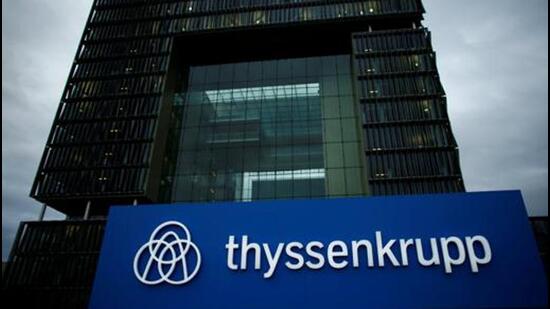German yard makes fresh pitch for Indian order as submarine hunt enters critical phase

German shipbuilder thyssenkrupp Marine Systems (tkMS) on Wednesday made a fresh pitch to equip the Indian Navy with a variant of its HDW Class 214 submarine, with a focus on the new technologies it integrates, technology transfer and indigenisation to push the country’s self-reliance agenda, and the navy’s proven track record of operating the yard’s Class 209/1500 vessels.

It faces competition from Spanish shipbuilder Navantia that has offered its S-80 submarine to India for the ₹43,000-crore P-75I programme to build six advanced vessels with an air independent propulsion (AIP) system in partnership with local yards. AIP significantly increases a submarine’s underwater endurance and reduces the risk of detection.
The tkMS push comes at a time when India’s hunt for new attack submarines is set to enter a critical phase, with the navy finalising its technical report on the recent field evaluation trials of the HDW Class 214 and S-80 submarines. The trials focused on evaluating their AIP systems.
“Technically we are in a strong position. tkMS fully demonstrated the AIP system during the trials (in March). We will transfer the submarine’s design and technology to India, enabling the goal of self-reliance,” tkMS India CEO Khalil Rahman said at a media briefing.
While tkMS has tied up with the Mazagon Dock Shipbuilders Limited (MDL) for the project, Navantia has teamed with engineering major Larsen & Toubro. The evaluation of the S-80’s AIP system was done at a shipyard in Cartagena in June. It demonstrated the AIP system operating on the surface and its performance while submerged would be shown soon, as previously reported by HT.
Rahman said the tkMS platform will be tailored to meet the Indian Navy’s requirements, its angular design will make it stealthy, and a new lithium-ion battery system (instead of lead-acid battery) will be installed on board to give the submarine greater dived endurance at higher speeds.
“A combination of AIP and lithium-ion battery will enhance the operational capabilities of the submarine,” he said.
The first submarine under P-75I must have a minimum of 45% indigenisation, with the local content going up to 60% in the sixth.
To be sure, Navantia and L&T have also said they are fully committed to meeting India’s transfer of technology requirements and the stipulations for indigenous content in line with New Delhi’s goal of achieving self-reliance in manufacturing defence hardware.
The project will take time to mature. If all goes well after a contract is awarded, the first submarine will be delivered to the navy only after seven years with the rest at the rate of one per year.















